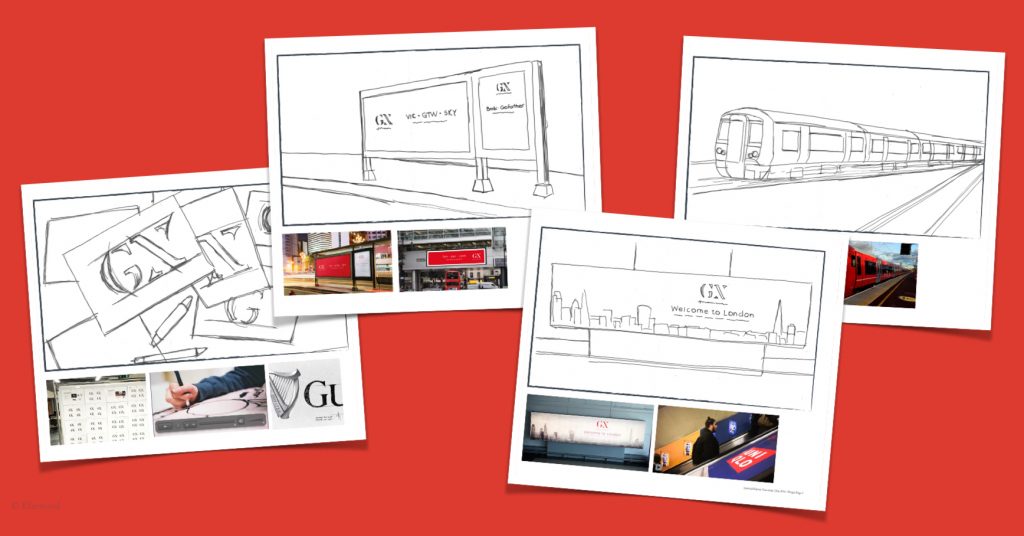
How to create an engaging case study
We all know that agencies revolve around servicing their clients and, as a result, their own marketing needs can be further down the priority list. If you’re finding that business has suddenly gone a bit quiet, then now’s the time to focus on getting your house in order and building up your own marketing toolkit.
Some of its most important components are case studies; and they’re a great place to start if you’re keeping an eye on costs as they can mostly be done in house. Having overseen their creation for a number of years, here are my top tips for creating an engaging case study.
Have a clear and compelling narrative
A lot of the time, case studies can feel a bit generic – this is what we were asked to do followed by a summary of what we did and, if you’re lucky, some results or a client testimonial. All interesting enough, but a bit dull. Instead, it’s better to start with why a potential client would be interested in reading this story and work back from that.
Be clear about what makes this project particularly special, different or noteworthy, and how that links back to how you want your agency to be positioned. For example, was it a particularly difficult challenge that you strategically and creatively solved for your client? Or was it the process or different ways in which you worked together? Was it the innovative print finishes or techniques used?
Once you’re clear on that, you can start to create a compelling case study around the following framework:
1. What was the challenge?
Yes, be clear about what the client asked you to do, but focus on the why. What was the marketing or business challenge(s) that they were facing? Did you challenge them at all on this? What experience and expertise did you bring to the brief? What did they hope to achieve by commissioning this piece of work?
All of this not only enriches the story, but also gives potential clients an opportunity to recognise similar challenges that they may be facing, and how you might be able to solve them.
2. What was the insight that led to your approach?
It’s important to know what you actually did, but it’s even more interesting to know the insight behind it. Demonstrate your ability to get under the skin of an issue, and strategically and creatively solve it. Show how a key insight led to your big idea and then how that translates across everything.
3. What impact has it had?
Include some results, but make them related to the original objectives. Show how you actually solved the challenge. And, if you can show what the results mean in the wider context of the market in which the brand operates, then even better.
Obviously it might not be a great idea to contact your client for any results right now, but instead of filling your days mindlessly scrolling through social media, see if you can find anything about the brand’s or business’ performance online – post launch, but also before launch if it’s a redesign. This becomes even more vital as a benchmark of success if you’re thinking about entering an award.
And if you really can’t resist the urge to go on social media, then see how people are engaging with the brand. Are there any specific comments about your design? Can you see your campaign gaining traction?
Storyboard it
Once you have the outline of your narrative, storyboard it. Agencies tend to need case studies in various formats for various reasons (credentials/new business presentations, PR, social media, website, award entries, etc.), so start with the most detailed version, which is likely to be for your creds – you can edit for the other purposes. Plan out the flow of your presentation and what visuals are needed to tell that story.
Try to make ‘the challenge’ as visually interesting as you can. Often, at this point, the temptation is to grab imagery from the Internet so you need to be extremely careful not to infringe any copyright.
When planning out the insight/strategy/solution section, think about what will make it more visually engaging – any shots from any audits? Or shots of the strategy process/brainstorms/etc.? Any initial sketches of the design? Anything that will help to bring the whole process to life so any future clients can get a better idea of what they’re actually buying into.

After that, think about your portfolio images. If it’s a packaging design you’ll need single and range pack shots on a neutral background as a minimum, but you’ll also need to make them engaging and show them in context. Think about what it was you identified as special, different or noteworthy – is this being brought to life visually? How is it best brought to life? While at the moment location-based photo shoots are probably a no-no, visuals, animations, or even a movie could be great alternatives – and also more cost-effective ones at that.

Build it
Once you have your component parts, all that’s left to do is build it in Keynote (or PowerPoint). You can then edit for your other needs. Remember your client or customer journey and build in something extra at each stage – e.g. snippets for social media content that directs to your website where there’s more info that makes them want to contact you for a more detailed discussion about how you can do the same for them.
Get organised for the future
Once you’re up to date with your completed projects, you could also take the time to get organised for the future. A great way to do this is to create a dedicated space on your server – a case study folder within the project folder. You can use this throughout the life of the project as a repository for anything that might be of use for when it comes to writing a case study – briefs, audits, research, images from throughout the design process, press releases and any client emails regarding performance, etc.
If you do all of this, you’ll have put yourself in the best position to showcase what you do and will have some great content for driving your profile and awareness, which is all the more important right now.



